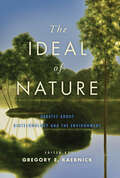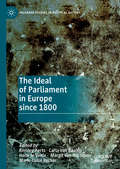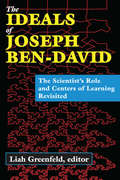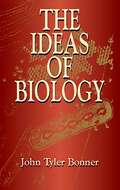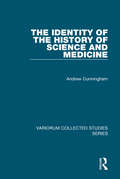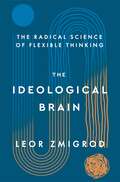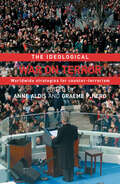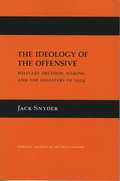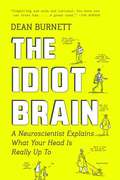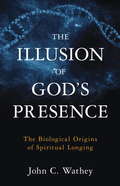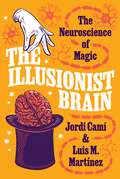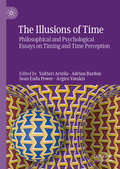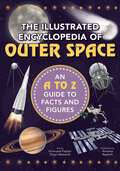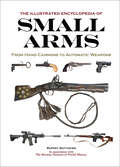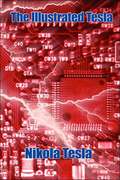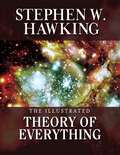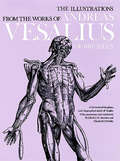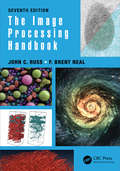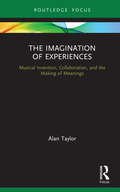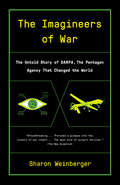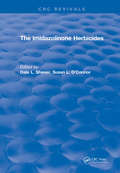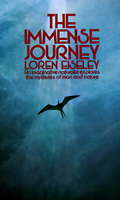- Table View
- List View
The Ideal Result
by Jack HippleThe Ideal Final Result introduces the TRIZ Inventive Problem Solving Process in a way that allows readers to make immediate use of its most basic concepts. The Ideal Final Result reviews the basics of this left brained, but at the same time, very creative process for problem solving that uses a basic algorithm developed through the study of millions of patents. As opposed to psychologically based tools relying on the generation of hundreds of ideas to be sorted through to find the few of value, TRIZ rigorously defines the problem and assists the problem owner in identifying the existing inventive principles that are already known to solve that class of problems. This book reviews the most basic of the TRIZ algorithm tools and provides templates for readers to use in analyzing their difficult problems and provides a mental framework for their solution. It also describes TRIZ techniques for basic strategic planning in a business sense.
The Ideal of Nature: Debates about Biotechnology and the Environment
by Gregory E. KaebnickIn this provocative anthology, scholars consider the meaning and merits of “nature” in debates about biotechnology and the environment.Drawing on philosophy, religion, and political science, this book asks what the term “nature” means, how it should be considered, and if it is—even in part—a social construct. The contributors question if the quality of being “natural” is intrinsically valuable. They also discuss whether appeals to nature can and should affect public policy and, if so, whether they are moral trump cards or should instead be weighed against other concerns.Though consensus on these questions remains elusive, this should not be an obstacle to moving the debate forward. By bringing together disparate approaches to addressing these concepts, The Ideal of Nature suggests the possibility of intermediate positions that move beyond the usual full-throated defense and blanket dismissal found in much of the debate. Scholars of bioethics, environmental philosophy, religious studies, sociology, public policy, and political theory will find much merit in this book’s lively discussion.
The Ideal of Parliament in Europe since 1800 (Palgrave Studies in Political History)
by Henk Te Velde Remieg Aerts Carla Van Baalen Margit van der Steen Marie-Luise ReckerThis edited collection explores the perceptions and memories of parliamentarianism across Europe, examining the complex ideal of parliament since 1800. Parliament has become the key institution in modern democracy, and the chapters present the evolution of the ideal of parliamentary representation and government, and discuss the reception and value of parliament as an institution. It is considered both as a guiding concept, a Leitidee, as well as an ideal, an Idealtypus. The volume is split into three sections. The establishment of parliament in the nineteenth century and the transfer of parliamentary ideals, models and practices are described in the first section, based on the British and French models. The second part explores how the high expectations of parliamentary democracy in newly-established states after the First World War gradually started to subside into dissatisfaction. Finally, the last section attests to its resilience after the Second World War, demonstrating the strength of the ideal of parliament and its power to incorporate criticism. Examining the history of parliament through concepts and ideals, this book traces a transnational, European exchange of models, routines and discourse.
The Ideals of Joseph Ben-David: The Scientist's Role and Centers of Learning Revisited
by Liah GreenfeldJoseph Ben-David died twenty-five years ago, in January 1986. An eminent sociologist of science, and a co-founder of this sub-discipline, he was only sixty-five years old. Few social scientists are remembered after they die and can no longer parlay their influence into the goods of this world for colleagues and acquaintances. This was not Ben-David's fate. His work continues to be taught and referred to by scholars spread far and wide (in terms of both countries and disciplines). His students never forgot him, his books were republished, and his essays appeared in new collections. Ben-David's legacy includes ideas and ideals. Its central tenet is the autonomy of science, its right--and duty--to be value-free. Scholarship oriented to any goal other than the accumulation of objective knowledge about empirical reality, for him, was science no longer and did not have its authority. In this light, the life of scholarship was one of moral dedication, with nothing less than the fate of liberal democratic society depending on it. And for science to thrive, the university, its home, had to be the embodiment of the cardinal virtue of this society: the virtue of civility. In the spirit of Ben-David, believing that scholarly debate advances common good, and rational discourse wins whichever way arguments in it are settled, this festschrift debates such core issues as the nature of science, its changing definition and position in Western society, the forms of organization optimal for scientific creativity, and the ability of the research university to foster scientific growth, while also performing its educational role.
The Ideas of Biology (Dover Books on Biology)
by John Tyler Bonner"The great achievement of this book," observed the distinguished science writer Gerald Wendt, "is that it presents the basic concepts of biology in concise, lucid, orderly form and thus gradually and understandably transforms the miracle of life into a succession of miraculously simple processes." John Tyler Bonner's series of concise essays explores the foundations of modern biology: the cell, genetics, development, and evolution. "Biologists are fortunate in having such a scientist and author interpret these facts, for Dr. Bonner's style of writing contributes greatly to the success of the work," noted Library Journal, adding, "The drawings which accompany the text are excellent." Since evolution provides the framework for life, the author makes it his central theme, with introductory material on the living machine itself and succeeding chapters on heredity, embryonic development, and ultimately, relations between organisms and their environment. Written as a supplement to classroom biology texts, this volume can be read independently.
The Ideas of Particle Physics
by James E. Dodd Ben GripaiosThis book is a comprehensive introduction to particle physics, bridging the gap between traditional textbooks on the subject and popular accounts that assume little background knowledge. This fourth edition is fully revised, including the most recent ideas and discoveries, and the latest avenues of research. The development of the subject is traced from the foundations of quantum mechanics and relativity, through the formulation of quantum field theories, to the standard model. Research now continues with the first signs of physics beyond the standard model and with the formulation of modern string theory which aims to include a quantum theory of gravity for the first time. This book is intended for anyone with a background in physical sciences who wishes to learn about particle physics. It is also valuable to students of physics wishing to gain an introductory overview of the subject.
The Identity of the History of Science and Medicine (Variorum Collected Studies)
by Andrew CunninghamIn these essays, Andrew Cunningham is concerned with issues of identity - what was the identity of topics, disciplines, arguments, diseases in the past, and whether they are identical with (more usually, how they are not identical with) topics, disciplines, arguments or diseases in the present. Historians usually tend to assume such continuous identities of present attitudes and activities with past ones, and rarely question them; the contention here is that this gives us a false image of the very things in the past that we went to look for.
The Ideological Brain: The Radical Science of Flexible Thinking
by Leor ZmigrodNamed a best book of the year by The Guardian and The TelegraphWhy do some people become radicalized? How do ideologies shape the human brain? And how can we unchain our minds from toxic dogmas?In The Ideological Brain, Leor Zmigrod reveals the deep connection between political beliefs and the biology of the brain. Drawing on her own pioneering research, she uncovers the complex interplay between biology and environment that predisposes some individuals to rigid ways of thinking, and explains how ideologies take hold of our brains, fundamentally changing the way we think, act and interact with others. She shows how ideologues of all types struggle to change their thought patterns when faced with new information, culminating in the radical message that our politics are not superficial but are woven into the fabric of our minds.This authoritative, accessible and playful blend of psychology, politics and philosophy explores the cutting-edge of the emerging field of political neuroscience. Zmigrod examines its historical roots before she looks to the future, considering the broader social and political implications of her groundbreaking research. Guiding readers through her experiments, she eventually describes what a free, authentic, and tolerant brain looks like, and explains how anyone can keep their mind open and flexible in the face of extremist ideologies.
The Ideological War on Terror: Worldwide Strategies For Counter-Terrorism (Political Violence)
by Graeme P. Herd Anne AldisThis edited book addresses the appropriateness of US and other counter-terrorist (CT) strategies in Europe and Eurasia, the Middle East, the Asia Pacific region and in Latin America, with a view to improving their effectiveness. The book has three main objectives: to re-examine terrorists' strategic goals and sources of legitimacy and the nature of their ideological support to analyze current US and regional CT strategies and assess their success in de-legitimizing terrorists and undermining their support to provide a strategic synthesis and policy recommendations in light of the research findings. This book will be of interest to students of political violence and terrorism, security studies and international relations in general.
The Ideology of the Offensive
by Jack SnyderJack Snyders analysis of the attitudes of military planners in the years prior to the Great War offers new insight into the tragic miscalculations of that era and into their possible parallels in present-day war planning. By 1914, the European military powers had adopted offensive military strategies even though there was considerable evidence to support the notion that much greater advantage lay with defensive strategies. The author argues that organizational biases inherent in military strategists attitudes make war more likely by encouraging offensive postures even when the motive is self-defense. Drawing on new historical evidence of the specific circumstances surrounding French, German, and Russian strategic policy, Snyder demonstrates that it is not only rational analysis that determines strategic doctrine, but also the attitudes of military planners. Snyder argues that the use of rational calculation often falls victim to the pursuit of organizational interests such as autonomy, prestige, growth, and wealth. Furthermore, efforts to justify the preferred policy bring biases into strategists decisions biases reflecting the influences of parochial interests and preconceptions, and those resulting from attempts to simplify unduly their analytical tasks. The frightening lesson here is that doctrines can be destabilizing even when weapons are not, because doctrine may be more responsive to the organizational needs of the military than to the implications of the prevailing weapons technology. By examining the historical failure of offensive doctrine, Jack Snyder makes a valuable contribution to the literature on the causes of war.
The Idiot Brain: A Neuroscientist Explains What Your Head Is Really Up To
by Dean BurnettThe brain may be the seat of consciousness and the engine of all human experience, but it’s also messy, fallible and disorganized. It’s undeniably impressive, but it’s far from perfect, and these imperfections influence everything that humans say, do and experience. In The Idiot Brain, Dean Burnett celebrates the downright laughable things our minds do to us, as well as exposing the fact that people are often way off in their thinking about how the brain works. For example, did you know thatyour memory is egotistical?stress can actually increase your performance at a task?conspiracy theories and superstitions stem from your brain’s insistence that the world isn’t random?the brain’s limitations mean you really can miss something that’s right under your nose?the way the brain’s processing works means that time really does fly if you’re having fun?alcohol can sometimes improve your memory?Dean Burnett’s unpredictable and entertaining first book explores the unexpected side of everyday life, highlighting where conventional thinking is wrong and how our brains trip us up at every turn. This is lucid, funny and smart: in short, the best kind of popular science.
The Illusion of God's Presence
by John C. WatheyAn essential feature of religious experience across many cultures is the intuitive feeling of God's presence. More than any rituals or doctrines, it is this experience that anchors religious faith, yet it has been largely ignored in the scientific literature on religion.Starting with a vivid narrative account of the life-threatening hike that triggered his own mystical experience, biologist John Wathey takes the reader on a scientific journey to find the sources of religious feeling and the illusion of God's presence. His book delves into the biological origins of this compelling feeling, attributing it to innate neural circuitry that evolved to promote the mother-child bond. Dr. Wathey, a veteran neuroscientist, argues that evolution has programmed the infant brain to expect the presence of a loving being who responds to the child's needs. As the infant grows into adulthood, this innate feeling is eventually transferred to the realm of religion, where it is reactivated through the symbols, imagery, and rituals of worship. The author interprets our various conceptions of God in biological terms as illusory supernormal stimuli that fill an emotional and cognitive vacuum left over from infancy. These insights shed new light on some of the most vexing puzzles of religion, like the popular belief in a god who is judgmental and punishing, yet also unconditionally loving; the extraordinary tenacity of faith; the greater religiosity of women relative to men; religious obsessions with sex; the mysterious compulsion to pray; the seemingly irrepressible feminine attributes of God, even in traditionally patriarchal religions; and the strange allure of cults. Finally, Dr. Wathey considers the hypothesis that religion evolved to foster reproductive success, arguing that, in an age of potentially ruinous overpopulation, magical thinking has become a luxury we can no longer afford, one that distracts us from urgent threats to our planet.Deeply researched yet elegantly written in a jargon-free and accessible style, this book presents a compelling interpretation of the evolutionary origins of spirituality and religion.From the Hardcover edition.
The Illusionist Brain: The Neuroscience of Magic
by Jordi Camí Luis M. MartínezHow magicians exploit the natural functioning of our brains to astonish and amaze usHow do magicians make us see the impossible? The Illusionist Brain takes you on an unforgettable journey through the inner workings of the human mind, revealing how magicians achieve their spectacular and seemingly impossible effects by interfering with your cognitive processes. Along the way, this lively and informative book provides a guided tour of modern neuroscience, using magic as a lens for understanding the unconscious and automatic functioning of our brains.We construct reality from the information stored in our memories and received through our senses, and our brains are remarkably adept at tricking us into believing that our experience is continuous. In fact, our minds create our perception of reality by elaborating meanings and continuities from incomplete information, and while this strategy carries clear benefits for survival, it comes with blind spots that magicians know how to exploit. Jordi Camí and Luis Martínez explore the many different ways illusionists manipulate our attention—making us look but not see—and take advantage of our individual predispositions and fragile memories.The Illusionist Brain draws on the latest findings in neuroscience to explain how magic deceives us, surprises us, and amazes us, and demonstrates how illusionists skillfully “hack” our brains to alter how we perceive things and influence what we imagine.
The Illusions of Time: Philosophical and Psychological Essays on Timing and Time Perception
by Adrian Bardon Valtteri Arstila Sean Enda Power Argiro VatakisThis edited collection presents the latest cutting-edge research in the philosophy and cognitive science of temporal illusions. Illusion and error have long been important points of entry for both philosophical and psychological approaches to understanding the mind. Temporal illusions, specifically, concern a fundamental feature of lived experience, temporality, and its relation to a fundamental feature of the world, time, thus providing invaluable insight into investigations of the mind and its relationship with the world. The existence of temporal illusions crucially challenges the naïve assumption that we can simply infer the temporal nature of the world from experience. This anthology gathers eighteen original papers from current leading researchers in this subject, covering four broad and interdisciplinary topics: illusions of temporal passage, illusions and duration, illusions of temporal order and simultaneity, and the relationship between temporal illusions and the cognitive representation of time.
The Illustrated Encyclopedia of Outer Space: An A to Z Guide to Facts and Figures
by Diego Mattarelli Emanuela PagliariAstronauts, rockets, and stars—oh my! Learn everything about outer space from A to Z! This isn&’t your normal alphabet book. Instead of reading about apples and zebras, your child can learn planets and galaxies! Each letter in this fun alphabet book pertains to an important topic that explores space and space travel. Packed with information and curiosities, children will learn about: Black holesMeteorsSpace StationsOrbitsRocket scientistsAnd more! Kids get enough of simple words in school and not all kids are interested in the alphabet and reading. Pique their interest with this colorful, illustrated book that they will be wanting to read again and again. Encourage your kids to learn their alphabet by associating fun facts about space to each letter. After reading this picture book, young readers will be able to say with confidence that they know space from A to Z!
The Illustrated Encyclopedia of Small Arms: From Hand Cannons to Automatic Weapons
by Rupert MatthewsThis comprehensive, fully illustrated reference volume covers the evolution of small arms from primitive spears to portable rocket launchers.The Illustrated Encyclopedia of Small Arms details more than 1,000 weapons, complete with full-color photographs. Featuring arms from around the world and across history, this stunning guide highlights the intricacies that make each variety unique, tying in historical anecdotes as well as the history of certain brands. Revealing fascinating insights and historical episodes—such as the inspiration for Samuel L. Colt&’s revolvers, or the lozenge-case gun used by Italian spies during World War II—this is an ideal resource for historians as well as fire arms enthusiasts. The volume is lushly illustrated with detailed photographs, many of which are published here for the first time.
The Illustrated Tesla
by Nikola TeslaCollected here are twenty of Nikola Tesla's essays, letters, and speeches all with figures. In total there are some 214 figures. Now you can read these famous articles as they were intended to be read. Included are A New System of Alternating Current Motors and Transformers; Experiments with Alternate Currents of Very High Frequency and Their Application to Methods of Artificial Illumination; Experiments with Alternate Currents of High Potential and High Frequency; On Light and Other High Frequency Phenomena; The Problem of Increasing Human Energy, With Special References to the Harnessing of the Sun's Energy; The Disturbing Influence of Solar Radiation on the Wireless Transmission of Energy; Famous Scientific Illusions; Electrical Oscillators; and many many more!
The Illustrated Theory of Everything: The Origin and Fate of the Universe
by Stephen W HawkingBased on a series of lectures given at Cambridge University, The Theory of Everything presents the most complex concepts of physics— both past and present— in a clear and accessible manner. Stephen Hawking enlightens readers and exposes them to the rich history of scientific thought and the complexities of the universe in which we live. Using computer-assisted technology, Hawking reads from his own work.
The Illustrated Wavelet Transform Handbook: Introductory Theory and Applications in Science, Engineering, Medicine and Finance, Second Edition
by Paul S. AddisonThis second edition of The Illustrated Wavelet Transform Handbook: Introductory Theory and Applications in Science, Engineering, Medicine and Finance has been fully updated and revised to reflect recent developments in the theory and practical applications of wavelet transform methods. The book is designed specifically for the applied reader in science, engineering, medicine and finance. Newcomers to the subject will find an accessible and clear account of the theory of continuous and discrete wavelet transforms, while readers already acquainted with wavelets can use the book to broaden their perspective. One of the many strengths of the book is its use of several hundred illustrations, some in colour, to convey key concepts and their varied practical uses. Chapters exploring these practical applications highlight both the similarities and differences in wavelet transform methods across different disciplines and also provide a comprehensive list of over 1000 references that will serve as a valuable resource for further study. Paul Addison is a Technical Fellow with Medtronic, a global medical technology company. Previously, he was co-founder and CEO of start-up company, CardioDigital Ltd (and later co-founded its US subsidiary, CardioDigital Inc) - a company concerned with the development of novel wavelet-based methods for biosignal analysis. He has a master’s degree in engineering and a PhD in fluid mechanics, both from the University of Glasgow, Scotland (founded 1451). His former academic life as a tenured professor of fluids engineering included the output of a large number of technical papers, covering many aspects of engineering and bioengineering, and two textbooks: Fractals and Chaos: An Illustrated Course and the first edition of The Illustrated Wavelet Transform Handbook. At the time of publication, the author has over 100 issued US patents concerning a wide range of medical device technologies, many of these concerning the wavelet transform analysis of biosignals. He is both a Chartered Engineer and Chartered Physicist.
The Illustrations from the Works of Andreas Vesalius of Brussels
by J. B. Saunders Charles O’MalleyThe works of Andreas Vesalius (1514–1564) have long been regarded among the great treasures of the Renaissance. Published as medical books while he was teaching anatomy and dissection at the University of Padua, they include the Tabulae Sex (1538), intended as an aid to students; the magnificently illustrated De Humani Corporis Fabrica (1543), and the companion volume, the Epitome (1543). Individually, these books are milestones in the history of medicine. They also offer one of the most magnificent collections of anatomical drawings ever published. The plates were executed with such vitality and originality that they have been attributed to the most talented illustrators of the sixteenth century, not to mention Vesalius himself. Many of the drawings, in fact, were products of Titian's famous atelier. For this edition of the Vesalius illustrations, Dover has combined the best existing plates and text. The illustrations have been reproduced from the sumptuous (1934) Munich edition of Vesalius titled Icones Anatomicae. The Munich plates were struck for the most part from the original wood blocks then in the collection of the Library of the University of Munich. These priceless art objects were destroyed in the bombing of Munich during World War II. Aside from the original copies of the woodcuts (of which only a few complete sets are known), the Munich restrikes are the best representations of the Vesalian anatomical drawings, for they preserve much of the freshness and richness of the 1543 edition. The text of this Dover edition has been faithfully reproduced from an edition of Vesalius published by World Publishing Company in 1950. The editors, distinguished authorities on sixteenth-century medicine, have provided a very comprehensive history of Vesalius, his career, and excellent explanations of the legends surrounding the illustrators, artists, and publishers involved with the production of his books. No other source will provide the general reader, bibliophile, art historian, artist, or historian of science and medicine with such complete data on Vesalius and his fabulous anatomical illustrations.
The Image Processing Handbook
by John C. Russ F. Brent NealConsistently rated as the best overall introduction to computer-based image processing, The Image Processing Handbook covers two-dimensional (2D) and three-dimensional (3D) imaging techniques, image printing and storage methods, image processing algorithms, image and feature measurement, quantitative image measurement analysis, and more.Incorporating image processing and analysis examples at all scales, from nano- to astro-, this Seventh Edition: Features a greater range of computationally intensive algorithms than previous versions Provides better organization, more quantitative results, and new material on recent developments Includes completely rewritten chapters on 3D imaging and a thoroughly revamped chapter on statistical analysis Contains more than 1700 references to theory, methods, and applications in a wide variety of disciplines Presents 500+ entirely new figures and images, with more than two-thirds appearing in color The Image Processing Handbook, Seventh Edition delivers an accessible and up-to-date treatment of image processing, offering broad coverage and comparison of algorithms, approaches, and outcomes.
The Imagination of Experiences: Musical Invention, Collaboration, and the Making of Meanings
by Alan TaylorAimed at lay, student, and academic readers alike, this book concerns the imagination and, specifically, imagination in music. It opens with a discussion of the invalidity of the idea of the creative genius and the connected view that ideas originate just in the individual mind. An alternative view of the imaginative process is then presented, that ideas spring from a subconscious dialogue activated by engagement in the world around. Ideas are therefore never just of our own making. This view is supported by evidence from many studies and corresponds with descriptions by artists of their experience of imagining. The third subject is how imaginations can be shared when musicians work with other artists, and the way the constraints imposed by trying to share subconscious imagining result in clearly distinct forms of joint working. The final chapter covers the use of the musical imagination in making meanings from music. The evidence is that music does not communicate meanings directly, and so composers or performers cannot be looked to as authorities on its meaning. Instead, music is commonly heard as analogous to human experience, and listeners who perceive such analogies may then imagine their own meanings from the music.
The Imagineers of War: The Untold Story of DARPA, the Pentagon Agency That Changed the World
by Sharon WeinbergerThe definitive history of the Defense Advanced Research Projects Agency, the Pentagon agency that has quietly shaped war and technology for nearly sixty years.Founded in 1958 in response to the launch of Sputnik, the agency’s original mission was to create “the unimagined weapons of the future.” Over the decades, DARPA has been responsible for countless inventions and technologies that extend well beyond military technology. Sharon Weinberger gives us a riveting account of DARPA’s successes and failures, its remarkable innovations, and its wild-eyed schemes. We see how the threat of nuclear Armageddon sparked investment in computer networking, leading to the Internet, as well as to a proposal to power a missile-destroying particle beam by draining the Great Lakes. We learn how DARPA was responsible during the Vietnam War for both Agent Orange and the development of the world’s first armed drones, and how after 9/11 the agency sparked a national controversy over surveillance with its data-mining research. And we see how DARPA’s success with self-driving cars was followed by disappointing contributions to the Afghanistan and Iraq wars.Weinberger has interviewed more than one hundred former Pentagon officials and scientists involved in DARPA’s projects—many of whom have never spoken publicly about their work with the agency—and pored over countless declassified records from archives around the country, documents obtained under the Freedom of Information Act, and exclusive materials provided by sources. The Imagineers of War is a compelling and groundbreaking history in which science, technology, and politics collide.
The Imidazolinone Herbicides (CRC Press Revivals)
by Dale L Shaner Susan L O'ConnorThis book presents detailed information on the imidazolinone herbicides, provided in chapters contributed by scientists and product development managers who work for American Cyanamid, categorized in sections covering chemistry, biology, metabolism and residues, environmental fate and product performance. Each chapter has its own bibliography, and appendices give (a) details of the chemical and physical properties, formulations and trade names of imazapyr, imazamethabenz-methyl, imazethapyr and imazaquin, and (b) the scientific and common names of species used in the text. There is a general bibliography of references for each of the above imidazolinone herbicides and a useful subject index. The individual chapters are abstracted separately.
The Immense Journey
by Loren C. EiseleyAnthropologist and naturalist Loren Eiseley blends scientific knowledge and imaginative vision in this story of man.

